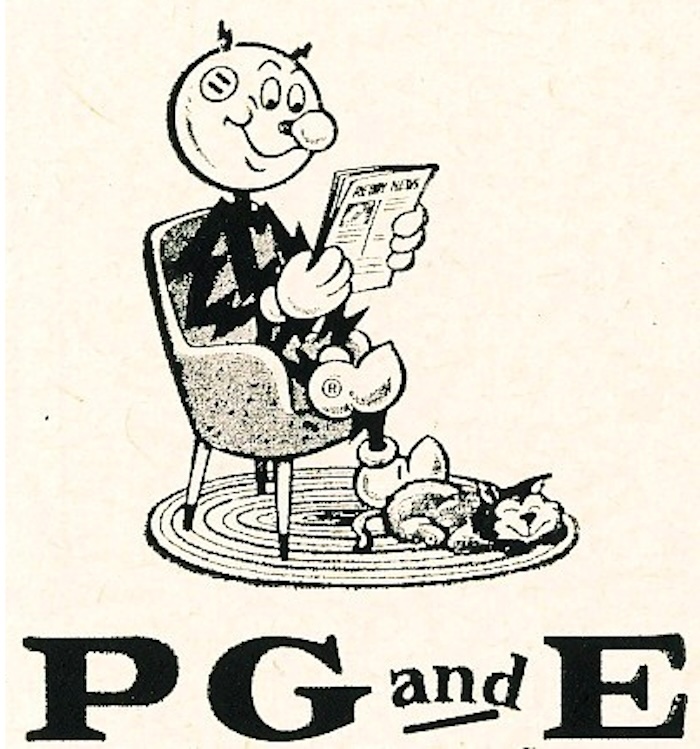San Francisco is taking the biggest steps in history toward creating a full public-power system.
In filings with the California Public Utilities Commission, the city has established that PG&E’s local property is worth about $2.3 billion—and if the commission agrees, the city can move to seize those assets under the power of eminent domain.
That would fulfill the century-old promise of the Raker Act, which allowed San Francisco to build a dam for water in Yosemite National Park under the condition that the city also created a public-power system.

A lot of this has been happening below the public radar: None of the major news media has reported much on the proceedings, which date back to 2021.
But the implications are huge: At a time when PG&E is widely unpopular, the chances of San Francisco running its own electric utility, which could provide cleaner power much cheaper, with more reliability, are much closer to reality.
A little background:
Since 1913, San Francisco has been under a federal mandate to provide public power to its residents and businesses. That was the deal that allowed the city to build a dam for water in Yosemite National Park. You can read the entire history here (I spent weeks in the National Archives in Washington DC collecting this data.)
But PG&E has managed, through its political clout at City Hall and its unlimited campaign funds, to block every effort to make that mandate a reality, and after the 1950s, the Interior Department stopped caring.
Help us save local journalism!
Every tax-deductible donation helps us grow to cover the issues that mean the most to our community. Become a 48 Hills Hero and support the only daily progressive news source in the Bay Area.
The sticking point was always an election: To take over PG&E’s system, the city would have to condemn it under eminent domain and seize it, for fair market value—but that would mean a bond act that required a two-thirds vote. PG&E has spent untold millions (of the ratepayers money) making sure that never happened.
But times have changed, and thanks to a measure a few years ago by Sup. Aaron Peskin, the SF Public Utilities Commission can now issue revenue bonds for clean power projects, including a public-power system. Revenue bonds are backed not by the city’s property taxes but by a specific revenue stream—in this case, the money the city would making selling retail power.
SF starts off with a huge benefit here: The city already owns a massive hydropower dam, which produces enough clean power to run all city departments, including Muni, with (in good water years) a lot to spare.
The city already has a CleanPowerSF operation, which offers 100 percent renewable power.
What the city doesn’t have is a distribution system. That’s owned by PG&E.
So all San Francisco needs to do at this point to get rid of a company that charges way too much and provides rotten service, which among other things hampers the construction of new housing, is file the legal paperwork to take over that system.
Every time I have run these numbers, and I have done it many times over the years, the results have been clear and unequivocal: San Francisco could pay as much as $3 billion or more for the existing lines, poles, meters, trucks, and other infrastructure, invest millions in upgrades, cut rates substantially—and not only pay off the bonds but net hundreds of millions of dollars a year, which could go, for example, to fund affordable housing.
Under the US Constitution, the government can’t seize private property without paying fair compensation—that is, a fair market value for the property.
So the SFPUC, under General Manager Dennis Herrera, has filed over the past two years a series of complex documents with the California Public Utilities Commission to determine the actual value of PG&E’s local distribution system. The CPUC agreed to proceed.
The filings are dense and sometimes hard to understand—but when you get to the bottom line, it looks like this:
The system is worth between $2.3. and $2.8 billion. At that price, a buyout financed with revenue bonds would be a huge bargain for the city. Remember: As soon as San Francisco takes over the system, all the money that we now pay to PG&E would go to the city. That’s hundreds of millions of dollars a year.
PG&E is doing everything possible to delay the process. But at a certain point, the CPUC will demand what amounts to a counter-offer—and at that point, which could come in the next 24 months, the city will have the next move.
In an ideal world, Barbara Hale, the assistant general manager for power at the SPFUC told me, PG&E would come to the table and negotiate. In the real world, they company will try to delay and obfuscate—and work to elect a mayor and supervisors who would refuse to move forward.
Mayor London Breed is on record supporting a PG&E buyout. I have no doubt that six supes—all we need to file the eminent domain action—are now on board.
That, of course, could all change in November.
I haven’t seen a lot of PG&E money in the mayoral or supes races, which makes sense: The company is wildly unpopular right now, particularly with the recent rate hikes and power outages, so nobody wants to be “PG&E’s candidate.”
But with its most lucrative property at stake, the company will work every political angle possible, as it has more than 100 years.
At a hearing last week, Sup. Myrna Melgar asked PG&E reps why the power keeps going off on the West Side of town—even when there’s no major weather. The reps had no good answers—but the folks who live there lined up to talk about how impossible it is get help, how some power outages last for days, and how “we feel abandoned.”
No powerful lobbyists can counter that widespread sentiment.
So the process is moving forward as it never has before, and when it’s over, and the lights come back on, and the city is flush with money (pretty much every public power system in the country makes money), and the city can move to 100 percent renewable power for everyone, including rooftop solar, which PG&E is trying to undermine, we can all have a big party and thank Bruce Brugmann, the founder of the Bay Guardian, who has been fighting for public power for more than 50 years.
And on the QT, I know one former PG&E lobbyist who promised he would buy the first round.




